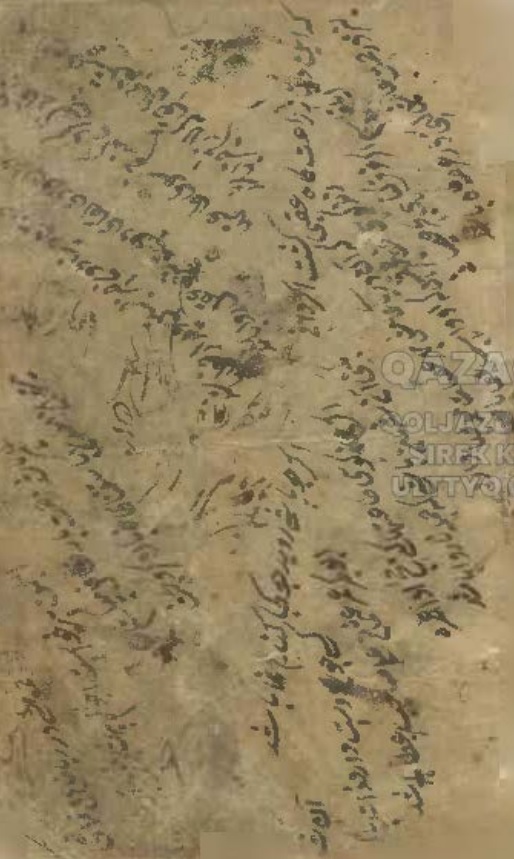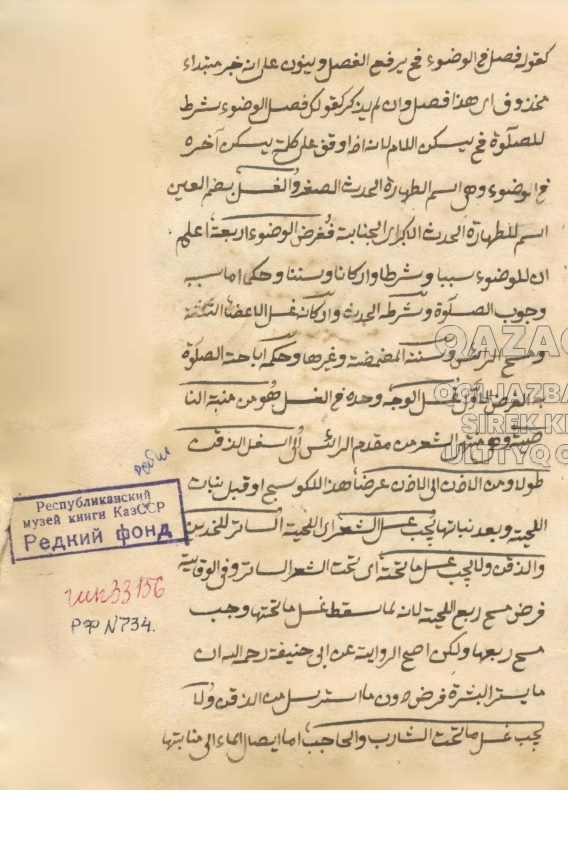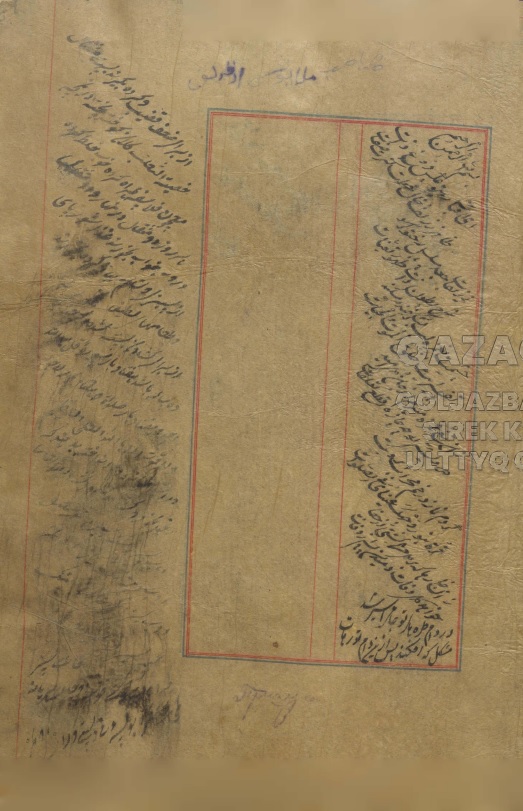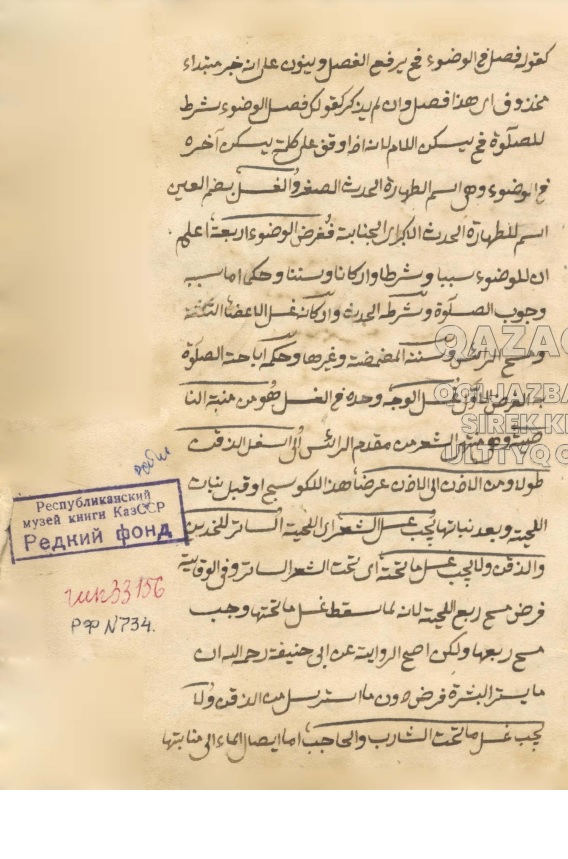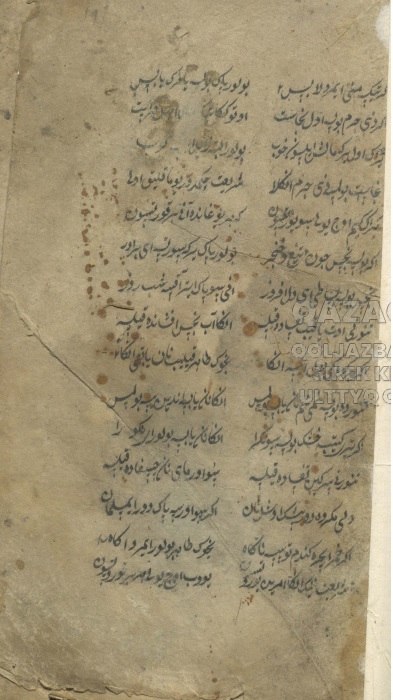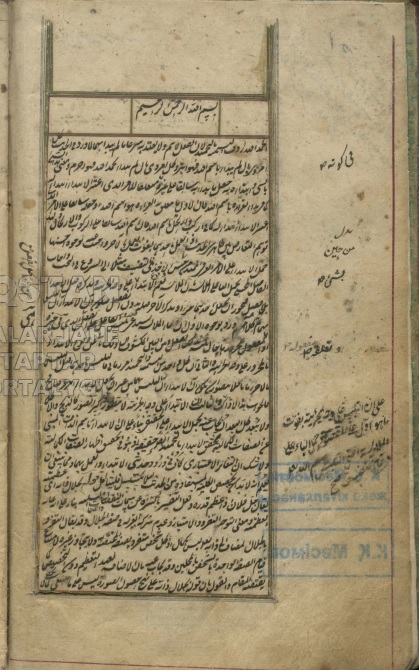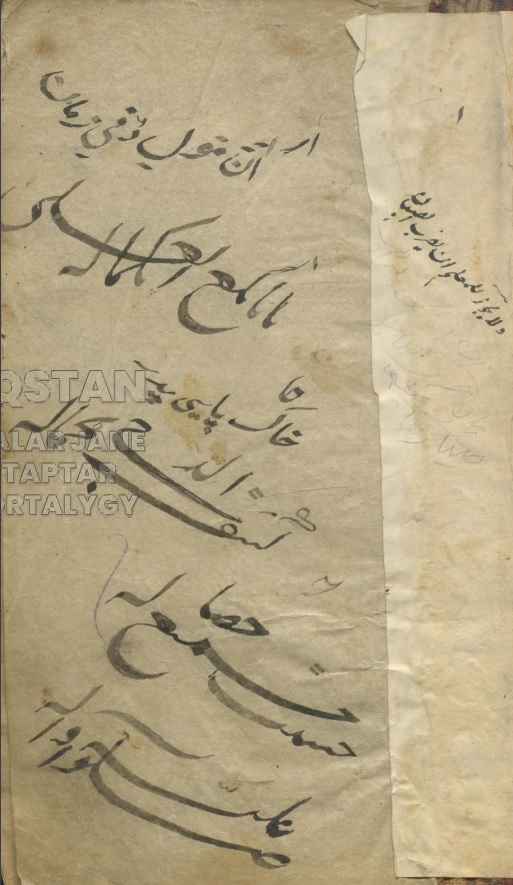Manuscripts
The collection of the National Center of Manuscripts and Rare Books contains many valuable sources intended for graduate students, doctoral students, scientists and readers interested in the history of our people. Among them, the most valuable heritage is the COLLECTION OF MANUSCRIPTS. Each manuscript has a different origin, but most of them are books of Central Asia. This can be determined mainly by their paleographic features. The chronological framework of the manuscripts covers the 19th-20th centuries. The collection presents various works in the Turkic, Arabic, Persian, Chagatai and Tatar languages. The scientific value of the manuscripts is high, their historical significance is very great. We present to your attention electronic versions and a list of several manuscripts on various topics. If you are interested in these manuscripts, you can get full versions at the National Center of Manuscripts and Rare Books, located at 12 Nurzhol Zhelekzholy.
ديوان حكمت «Divan-i Hikmat» (Sufi poetry)
Author – Ahmad Yasawi (d. ca. 562/1166-1167), a recognized Sufi figure, mystic, eponym of the Yasawiyya brotherhood.
The title of the work is a collection of hikmats under the conventional name “Diwan-i hikmat”. In the catalog of handwritten hikmats from one large collection – the funds of the Institute of Oriental Studies named after Abu Rayhan Beruni of the Academy of Sciences of the Republic of Uzbekistan (Tashkent), published by D. T. Kenjetayev in Turkestan in 2006, it was established the existence of 175 collected manuscripts containing poems/hikmats of Ahmad Yasawi. As a result of this project, it was found that a single standard divan (collection) does not exist and that the number, order of location of hikmats varied from one list to another. In total, 1026 different hikmats were established, signed in the name of Ahmad Yasawi.
شرح العقائد النسفية «Sharh al-'Aqa'id al-Nasafiyya»(Theology)
The author of the composition is Sa’d ad-Din Mas’ud ibn ‘Umar ibn Abdullah at-Taftazani an-Nasa’i al-Kharavi al-Khorasani ash-Shafi’i (d. 792/1390), a scholar, theologian, jurist, linguist, and renowned orator. He was born in the village of Taftazan, near the city of Nisa (Khorasan). Sa’d ad-Din at-Taftazani came from an ancient and respected family; his great-grandfather, grandfather, and father were also well-known scholars. He received his education in the city of Nisa. Later, Sa’d ad-Din at-Taftazani became a student of ‘Adud ad-Din al-Iji (d. 1355) and Qutb ad-Din ar-Razi (d. 1365). He spent a long time living in various cities of the Jochid state (1226–1502). Sa’d ad-Din at-Taftazani is known as the author of numerous high-quality works.
The title of the composition is Sharh ‘Aqā’id an-Nasafi. The work was completed in 768/1367 in Khwarezm (Jurjanīya), during the period of the author’s life and activity in the territory of the Golden Horde. In traditional madrasahs, the first stage (marhala) of study involved three stages of the following works: 1) ‘Aqā’id an-Nasafi by Abu Hafs an-Nasafi; 2) Sharh al-‘Aqā’id an-Nasafi by Sa’d ad-Din at-Taftazani; 3) al-Hashīyah ‘alaSharh al-‘Aqā’id an-Nasafi by Shams ad-Din Ahmad ibn Musa al-Izniqi al-Khayali (d. 862/1481). This clearly underscores the high [muhakkak] significance of this composition.
تحفة الطالبين فى شرح أبيات مراد العارفين «Tuhfat at-Talibin fi Sharh Abiyat Murad al-‘Arifin» (Sufism)
The author of the work is ‘Abd ar-Rahim ibn ‘Uthman ibn Sarmagi ibn Qirim al-Muhajir al-Utyz-Imyani al-Bulgari (1754-1834), a major poet, scholar, teacher and educator, who made a significant contribution to the development of Tatar religious culture with his diverse creative activity. Among his works, it is necessary to note the Arabic-language commentaries on two works of the Central Asian scholar and poet Sufi Allah-yar (d. in 1133/1721) – “Sabat al-‘ajizin” (The Fortitude of the Weak) and “Murad al-‘arifin” (The Goal of Those Who Know the Truth). He cited his nisba by origin and place of residence – “a migrant, al-Bulgari by birth, al-Bukhari by place of residence and stay” (al-muhajir al-Bulgari maulidan, al-Bukhari mustaqirran wa makaman).
The title of the work is “Tuhfat at-talibin fi sharh abyat murad al-‘arifin”. The work was composed in the address of the author’s long-time companion Mulla ‘Abd al-Muttalib al-Bulgari. The work is dedicated to the commentary on the verses (abyat) from “Murad al-‘arifin” by Sufi Allah-yar al-Kuttakurgani.
شرح تحفة الملوك «Sharh tuhfat al-muluk» (Sufi poetry)
شاه مشرب «Mahbub» /Shah Mashrab» (Poetry)
Poems from the ghazal “Shah Mashrab” by the famous Namangal poet of the 17th century Bobo Abd al-Rahim Mashrab. The poems are written in the Turkic-Chagatai and Persian languages. His name occupies a prominent place among such outstanding representatives of Uzbek literature as Navoi, Agakhi, Mukimi, Furkat, Zavki. With his work, he had a significant influence on the development and improvement of Uzbek literature of the late 17th – early 18th centuries. His poems were widely distributed in Central Asia and Afghanistan and enjoyed great popularity among the people. The poems of Bobo Abd ar Rahim Mashrab were read at Sufi gatherings.
شرح الرسالة الشمسية فى القواعد المنطقية «Sharh ar-Risala ash-Shamsiya fi-l-Qawa'id al-Mantiqiyya» (Logics)
The title of the work is Sharh ar-Risala ash-Shamsiya fi-l-Qawa’id al-Mantiqiyya, the author of which is unknown. The author of the main work is Najm ad-Din Ali ibn Umar ibn Ali al-Kazwini al-Katibi Dabbiran (d. 675/1276). His work Ar-Risala ash-Shamsiya fi-l-Qawa’id al-Mantiqiyya became the primary textbook on logic in the madrasah system.

